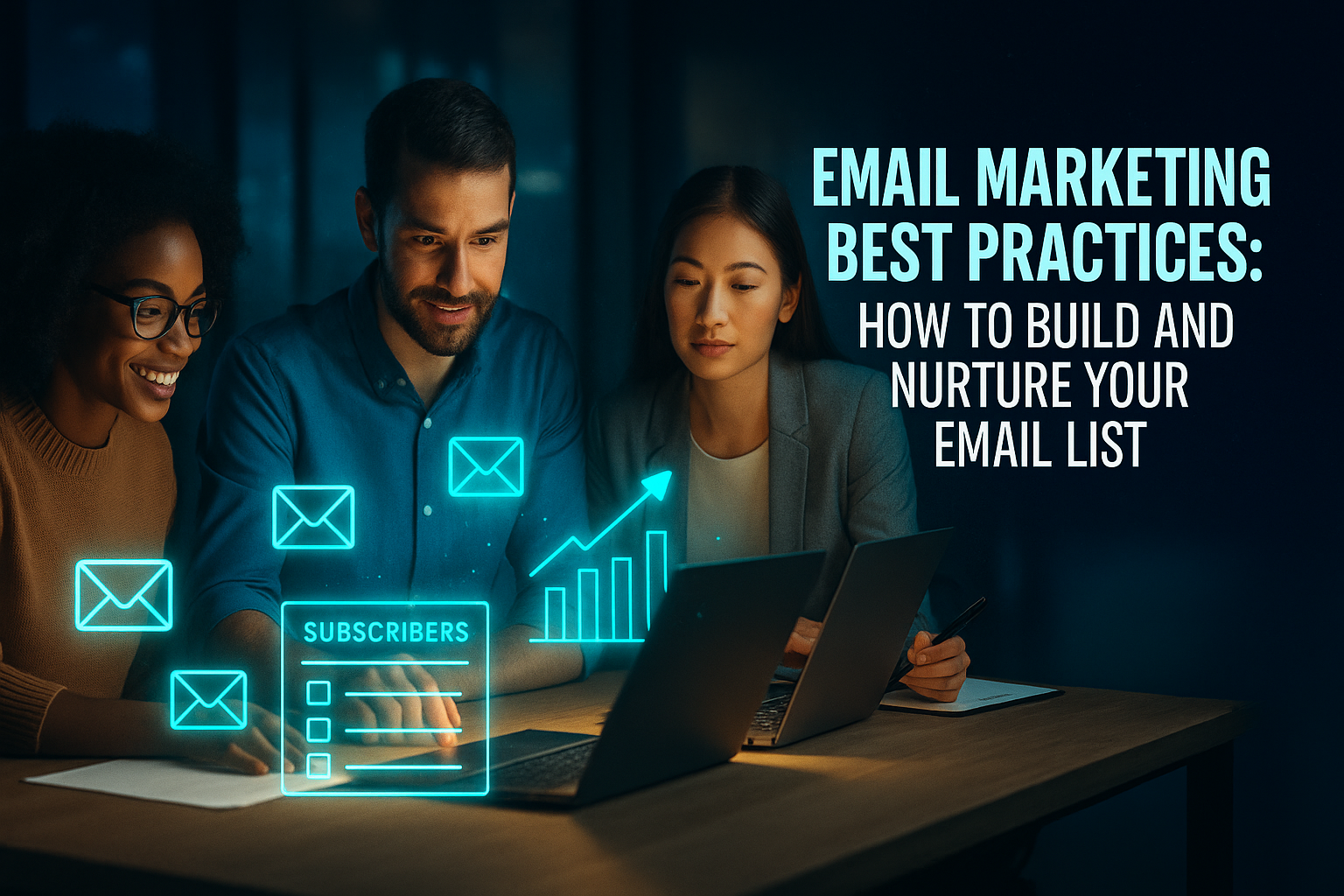In today’s fast-paced digital age, where social media and instant messaging reign supreme, email marketing remains a powerful tool for businesses and individuals alike. It goes beyond mere promotional messages and provides a personalized and direct channel to connect with your audience on a deeper level. In this article, we will explore the best practices to help you create an effective email list that converts, fosters long-term relationships, and drives business growth. Let’s dive in!
1. Understanding the Significance of Email Marketing
Email marketing is more than just sending promotional messages to your subscribers. It is a personalized and direct channel of communication that allows you to connect with your audience on a deeper level. By understanding the significance of email marketing, you can leverage it as a powerful tool to build brand loyalty and drive sales.
2. Defining Your Target Audience
Before you start building your email list, it is crucial to define your target audience. Who are the people you want to reach with your emails? Understanding your audience’s needs, interests, and pain points will help you create content that resonates with them.
3. Crafting Irresistible Lead Magnets
A lead magnet is an incentive offered to potential subscribers in exchange for their email address. It could be an eBook, a free course, a downloadable template, or any valuable content that your audience would find irresistible. Creating compelling lead magnets is essential to entice people to subscribe to your list.
4. Creating Opt-In Forms that Convert
Your opt-in forms play a significant role in capturing email addresses. Design visually appealing and user-friendly forms that encourage visitors to subscribe. Keep the form fields simple and avoid asking for too much information upfront.
5. Segmenting Your Email List for Personalization
Segmenting your email list allows you to send targeted and personalized content to different groups of subscribers. Divide your list based on demographics, interests, purchase behavior, or engagement level, and tailor your emails accordingly.
6. The Art of Writing Compelling Email Content
Your email content should be engaging and valuable to keep your subscribers interested. Use persuasive language, storytelling, and a clear call-to-action to drive action. Remember that your goal is not just to sell but to build a relationship with your audience.
7. Choosing the Perfect Email Sending Time
Timing is crucial in email marketing. Test different sending times to determine when your audience is most active and responsive. By sending emails at the right time, you increase the chances of them being opened and read.
8. A/B Testing Your Email Campaigns
A/B testing allows you to compare different elements of your email campaigns to see what resonates best with your audience. Test subject lines, content, visuals, and calls-to-action to optimize your email performance continually.
9. Ensuring Mobile Responsiveness
With the increasing use of mobile devices, it is essential to ensure that your emails are mobile-responsive. A significant portion of your audience will view your emails on their smartphones, so a seamless mobile experience is crucial.
10. Measuring Success with Email Marketing Analytics
Tracking key email marketing metrics will help you understand the effectiveness of your campaigns. Monitor open rates, click-through rates, conversion rates, and unsubscribe rates to make data-driven improvements.
11. Consistency is Key: Maintaining a Regular Email Schedule
Consistency is vital in email marketing. Set a regular schedule for sending emails to keep your audience engaged and accustomed to hearing from you. However, avoid bombarding them with too many emails.
12. Avoiding Common Email Marketing Pitfalls
Be aware of common mistakes in email marketing, such as sending generic content, neglecting list hygiene, or using spammy language. Understanding these pitfalls will help you avoid them and maintain a positive reputation.
13. Leveraging Social Media to Boost Your Email Subscribers
Use your social media platforms to promote your lead magnets and encourage people to join your email list. Social media can be a powerful tool to expand your reach and grow your subscriber base.
14. Integrating User-generated Content
User-generated content adds authenticity and credibility to your emails. Encourage your subscribers to share their experiences and testimonials, and incorporate them into your email campaigns.
15. Building Trust through Email Authentication
Incorporate email authentication techniques like SPF (Sender Policy Framework) and DKIM (DomainKeys Identified Mail) to protect your brand reputation and build trust with your recipients.
Conclusion
Building and nurturing an email list is a valuable strategy that allows you to foster relationships, provide value, and drive business growth. By understanding the significance of email marketing, crafting compelling content, and employing best practices, you can create a thriving email list that engages your audience effectively.
FAQs
- How often should I send emails to my subscribers?
A: The frequency of your emails depends on your audience’s preferences and your content’s relevance. Aim for consistency without overwhelming them. - Can I purchase an email list for quick results?
A: It is not recommended to purchase email lists. Focus on organic growth through lead magnets and opt-in forms to build a quality subscriber base. - What is the best way to increase email open rates?
A: Personalization, catchy subject lines, and sending emails at optimal times can significantly boost your open rates. - How do I handle inactive subscribers?
A: Consider re-engagement campaigns and offer incentives to rekindle their interest. If they remain unresponsive, consider removing them to maintain list hygiene. - Is it necessary to use email authentication methods?
A: Yes, email authentication helps prevent phishing and ensures your emails reach the recipients’ inbox, enhancing trust in your brand.

